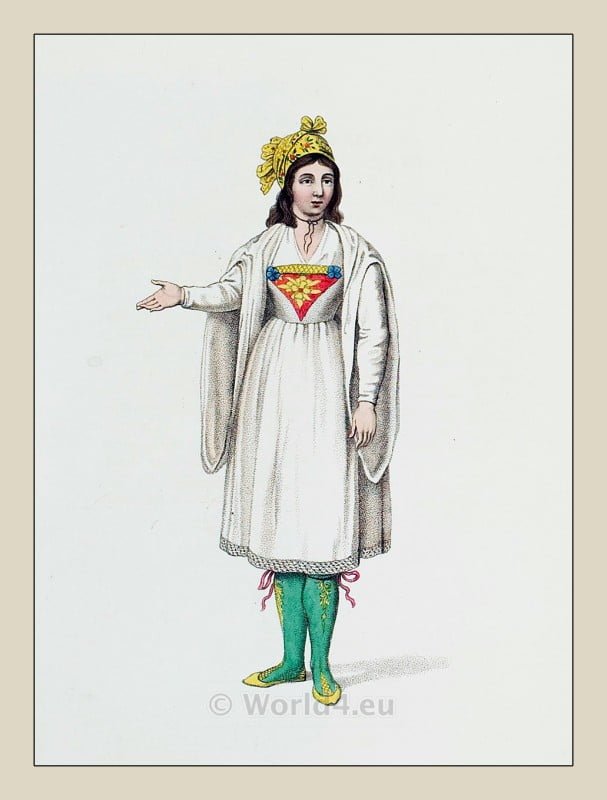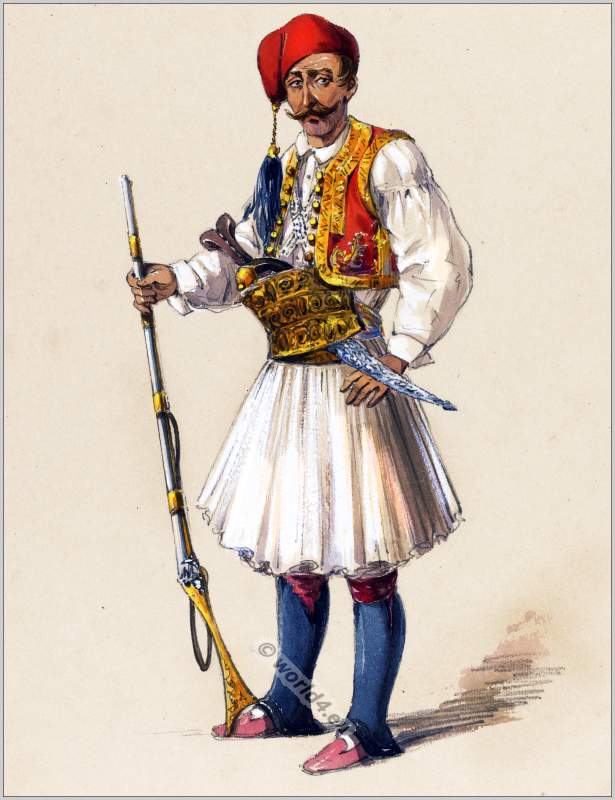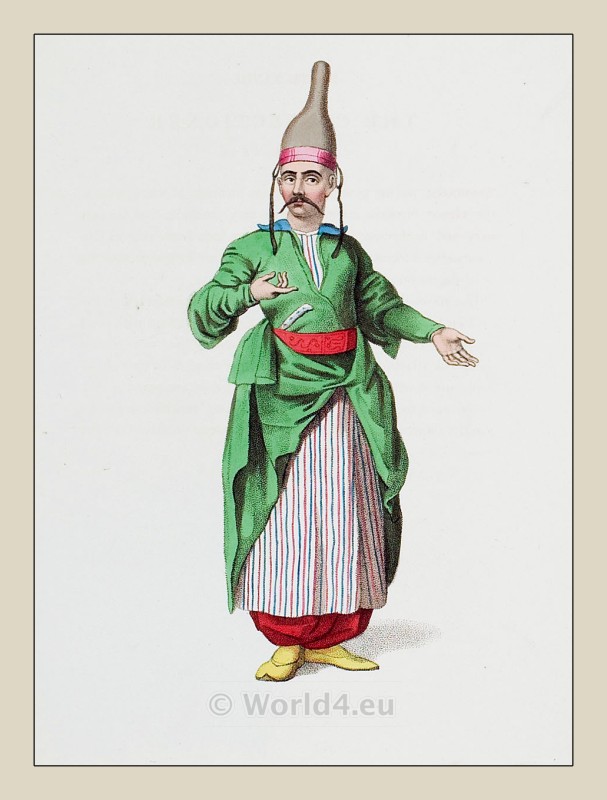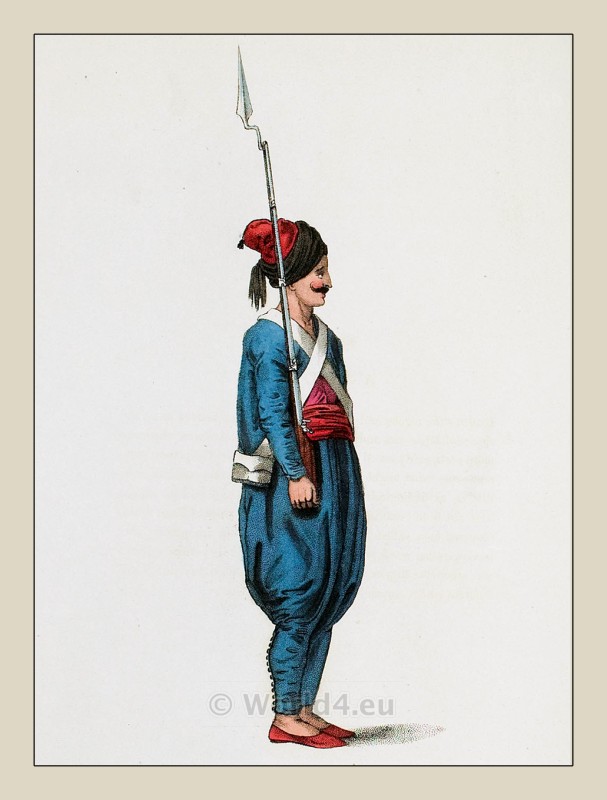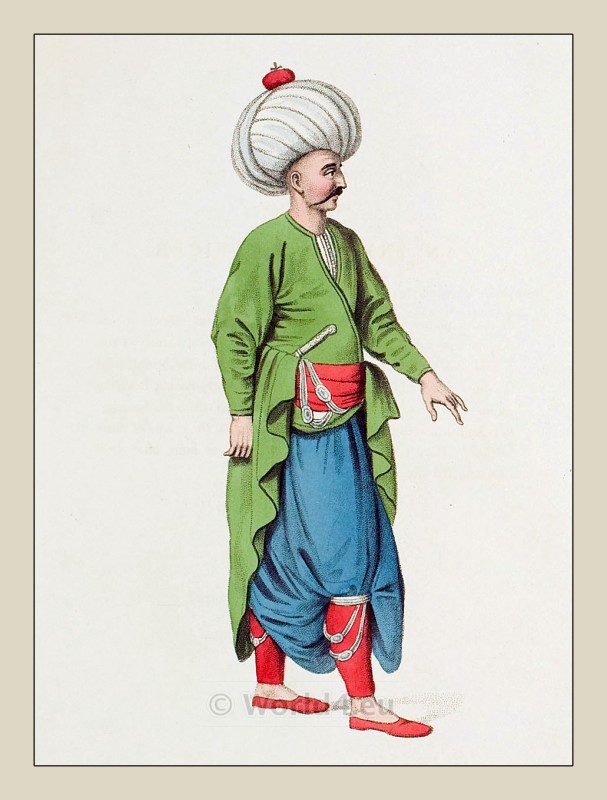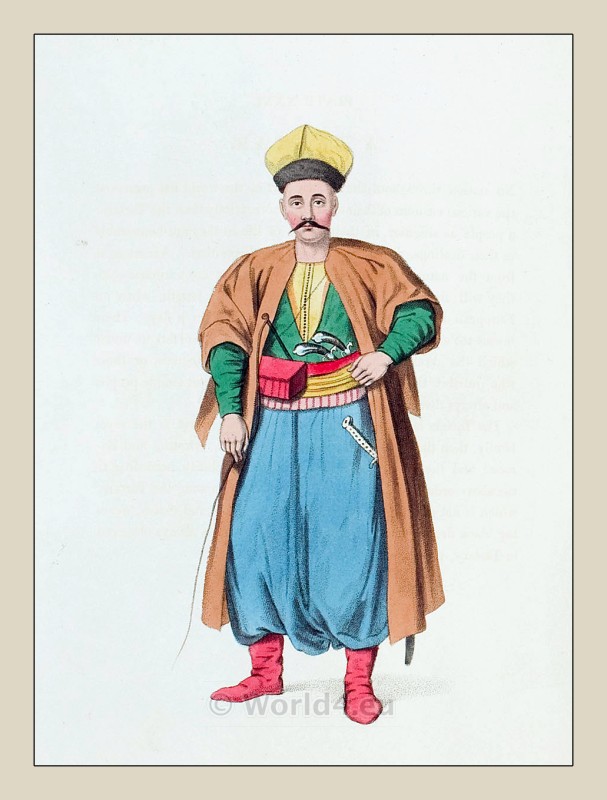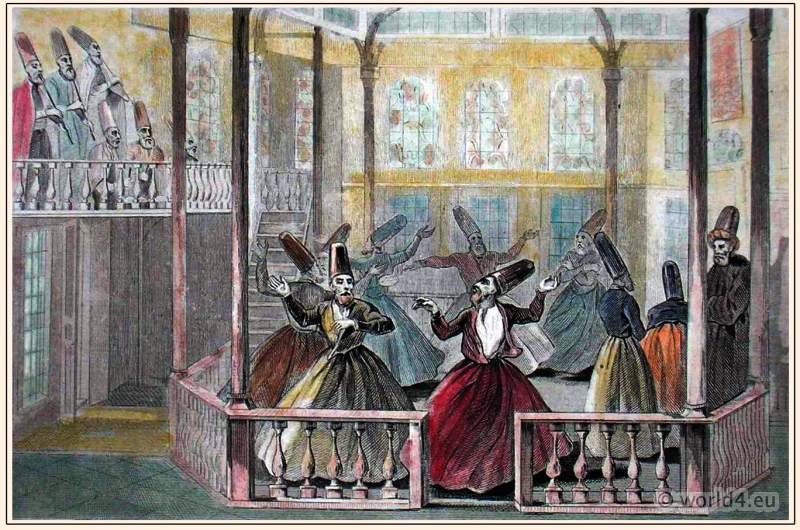A female of the island of Naxos.
Ottoman Empire ethnic groups.
THE Isle of Naxos, of which this plate represents an inhabitant, is separated from that of Paros. so famous for its marble, by a very narrow straight. It is the largest of all the Cyclades, and can view with most of them in fertility, although its shores present only bold, barren, and almost inaccessible mountains to all who approach it.
But these mountains are only so many barriers, which nature has formed, to oppose the violence of the winds; and thus preserve the riches of its plains and valise, so famous for their fruits and wines. The inhabitants of Naxos have been remarked even from the earliest times for their love of liberty. The men were brave and generous, the women modest and beautiful; but under the Turkish government little of their ancient spirit remains. The dress of the females is singular, yet, in many respects, elegant, particularly the headdress, which may vie even with the correct taste of the present British fashions.
Source: The costume of Turkey. Illustrated by a series of engravings; with descriptions in english. By Octavian Dalvimart. Printed by Howlett and Brimmer. Published in London, 1802.
Related
- Costumes and scenery of Afghanistan.
- Historical costumes of Japan and Java.
- History of the Indian Tribes of North America.
- Typical pictures of Indian Natives.
- Traditional Switzerland National Costumes
- Traditional Dutch national costumes.
- Traditional French national costumes.
- Country, Character, and Costumes in Portugal and Spain.
- Folk dresses from Norway, Dutch, Germany and Hungaria.
- Traditional folk costumes of Italy and France in 1821.
- Provincial Russia. Russian Costume and Culture.
Discover more from World4 Costume Culture History
Subscribe to get the latest posts sent to your email.

